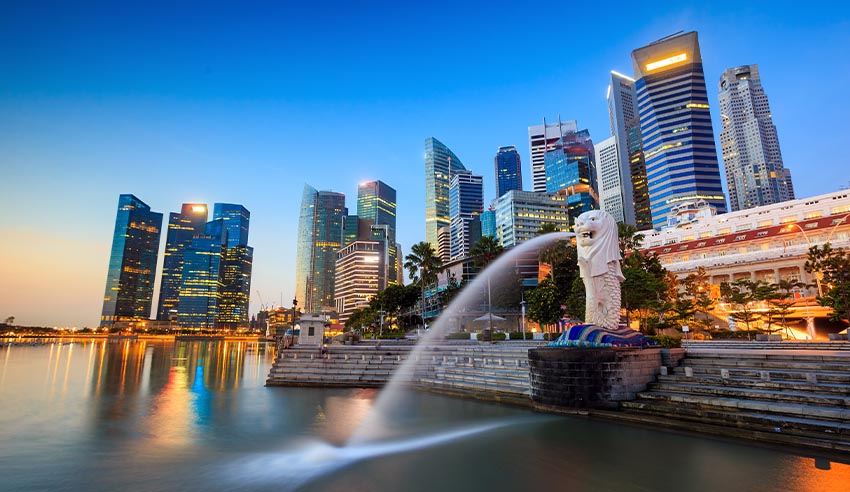Singapore Ministry of Law weighs in on importance of global mediation efforts
Two representatives from the Singapore Ministry of Law have spoken out about the historical signing of the Singapore Convention of Mediation, which is set to impact cross-border commercial disputes going forward.

The signing of the Singapore Convention of Mediation took place on 7 August, and followed a resolution passed by the UN General Assembly to adopt a convention which will give businesses greater certainty that mediated settlement agreements can be relied upon to resolve cross-border commercial disputes.
To continue reading the rest of this article, please log in.
Create free account to get unlimited news articles and more!
Representatives from over 50 countries, including Australia, attended the convention to show their support for the treaty.
Natalie Morris-Sharma, International Legal Division, The Singapore Ministry of Law and Sharon Ong, Director, Policy Advisory Division, The Singapore Ministry of Law spoke to Lawyers Weekly following the signing, where they shed light on the significance of such a treaty and the challenges encountered to get to this point.
How did this new international treaty of mediation come about?
The proposal to develop a multilateral convention that provides for cross-border enforcement of international commercial settlement agreements reached through mediation was put before the United Nations Commission on International Trade Law (UNCITRAL) in 2014.
The UNCITRAL Working Group on Dispute Settlement, which was chaired by a Singaporean, commenced discussions in 2015 and finalised the United Nations Convention on International Settlement Agreements Resulting from Agreement (the convention) as well as amendments to the Model Law on International Commercial Conciliation (2002) in February 2018.
On 20 December 2018, the UN General Assembly adopted the Convention, authorised a ceremony for the opening for signature of the convention to be held in Singapore and authorised the nomenclature of the “Singapore Convention on Mediation”.
What does it aim to solve?
As the world becomes more interconnected and interdependent, there is greater potential for collaboration, but also greater potential for collision and conflict. The convention provides a robust framework to manage such conflicts, to make sure they do not escalate or lead to unintended consequences.
The convention will also help advance international trade, commerce and investment as this convention gives businesses greater assurance that mediation can be relied on to settle cross-border commercial disputes, because mediated settlement agreements can now be enforced more readily by the courts of contracting parties to the convention and may also be invoked by a party as a defence against a claim.
Were there any challenges encountered in the lead-up to the singing? If so, how were these successfully mitigated?
During the discussions on the convention, the working group comprised delegations with different legal systems and backgrounds, and different levels of familiarity with mediation.
This gave rise to some challenges in finding common ground. Notwithstanding this, the working group’s spirit of collaboration and compromise led to the successful establishment of a framework for international settlement agreements resulting from mediation that is acceptable to all states, thus contributing to the development of harmonious international economic relations.
In the lead-up to the signing, the main challenge we faced was one of timing. The convention was adopted by the UN General Assembly on 20 December 2018, which was less than eight months before the convention was to open for signature on 7 August 2019. There was a short window of time to promote awareness and understanding of the convention, and interested signatories had to work quickly to ensure that they were in a position to sign the convention on 7 August 2019.
How will this impact mediation on a global scale going forward?
The Singapore Convention on Mediation is the missing third piece in the international dispute resolution enforcement framework. It adds to the arsenal of tools available for dispute resolution and access to justice.
Mediation is rising in popularity as a means to resolve cross-border commercial disputes. Mediation is not adversarial. It prizes win-win and preserving relationships. In mediation, disputant parties arrive at a settlement on their own volition, facilitated by a neutral third party. Mediation is also a faster, more cost-efficient method of resolving disputes.
However, the use of mediation has been hindered by a longstanding obstacle – the difficulty that a party faces in ensuring that the other party complies with their mediated settlement agreement. The lack of an efficient and harmonised framework for cross-border enforcement of settlement agreements resulting from mediation was often cited as a challenge to the use of mediation.
The convention resolves this longstanding obstacle.
What opportunities will arise for those impacted by this signing?
Forty-six countries have signed the convention. It will make doing business in these countries easier, and promote trade and commerce.
What has the feedback been since the signing of the new international treaty?
Very enthusiastic and positive. Signatory states are working toward ratifying the convention and others are looking to signing it.
Is there anything else you would like to add?
Industry players and users have hailed the Singapore Convention on Mediation as a game changer. Just as the New York Convention is a significant factor in the popularity of arbitration in commercial contexts, the Singapore Convention on Mediation promises to encourage the use of mediation as a time-saving, cost-saving and relationship-preserving means of settling disputes.






